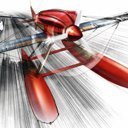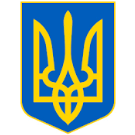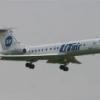Search the Community
Showing results for tags 'DoraWings'.
-
Republic P-43 Lancer (DW72027) 1:72 Dora Wings via Albion Alloys Ltd The P-43 Lancer was a work-in-progress in the mid-30s, and bears more than a passing resemblance to the pinnacle of its design, the P-47 Thunderbolt. Republic’s name was changed from Seversky, and it was their P-35 that was the jumping-off point for a number of designs in the period when it wasn’t yet certain that the US was going to join the war in Europe. The P-43 was one of the more successful designs, but it was an aircraft with some limitations, only performing at its best at higher altitudes where it was fast enough to catch and kill high flying reconnaissance aircraft. Lower down it wasn’t so great, so while it went into limited service with the US Air Force and other operators in small numbers it was soon obsolete thanks to the speed of technological progress during war. Some aircraft found their way to the AVG, flying against the Japanese before the US entered the war officially, where they were well-liked enough that when they were withdrawn, petitions were made by the Flying Tigers to keep them. They also served as high altitude reconnaissance with the RAAF who received a few airframes, and to intercept the aforementioned reconnaissance aircraft, but with only just under 300 built they were never destined for fame, and the P-44 Rocket that was to replace it didn’t even reach service, as the P-47 was just so good. The Kit This is a brand-new tool from our friends at Dora Wings, who have a short but interesting history of producing unusual subjects in various scales. I built their P-63E KingCobra kit when it was released, and thoroughly enjoyed it, despite a few trials, some of which were of my own making. Perusing the sprues of this kit gives me the impression that the moulding has moved on somewhat since then, and detail is good too, with decent transparencies, instrument panels with decals for each one, and a well-moulded engine, some PE parts with an alternate instrument panel and even some masks (not shown). That’s a pretty good package. The kit arrives in a small top-opening box, with four sprues in grey styrene, a clear sprue, a sheet of Photo-Etch (PE) brass, a small pre-cut vinyl mask sheet and a medium sized decal sheet, with the colour A5 instruction booklet that has painting and decaling instructions in the rear completing the package. Moulding is neat, with fine restrained pannel line, with no moulding issues that can be seen. Construction begins with the cockpit, starting with the instrument panel (IP), which can be either built with moulded-in dials and decal over the top, or with a flat panel to which you apply the decal then the PE panel to allow the decals to show through more realistically. Rudder pedals are fitted to the back of the IP, sidewalls are detailed with additional parts, then the sections are joined together on a floor panel and rear bulkhead, strengthened with the side panels and with the seat and PE belts glued in place and a short control column in front. The cockpit is put to the side while the firewall and engine mounts are made up, then the tail wheel bay, landing gear with 2-part tyres and separate scissor-links, and finally the engine. This is well-detailed, with both cylinder banks fully replicated with push-rods, reduction housing bell at the front, ignition harness and finally the close-fitting cowling added. The initial cowling comprises three parts plus a PE grille in the bottom, with the cowling lip added to the front and the PE cooling flaps inserted into the gap at the rear, giving a scale look and a view into the engine, so you’ve not wasted your time painting it. The prop is also made up, with all blades moulded together, a spinner at the front and a tiny ring at the rear. All of this makes for a very fast final assembly, and is akin to the process many modellers take when building a model. The cockpit and firewall are joined together first, then trapped between the fuselage halves along with the tail wheel bay, while the full-width lower wing has the two bay parts inserted then closed over with the upper wing halves, filling the gap in the middle with the fuselage. The ailerons are also separate parts, which is also the case with the tail feathers, giving you some options for a more candid pose. A clear gunsight, headrest and the rear canopy section are fitted first, then the rest of the canopy and windscreen are added to close it over, while the engine cowling assembly is glued to the front of the fuselage onto its mounts. Flipping the model over, the supercharger, cooling flap, pitot and wing guns are installed along with the prop, which you’ll probably leave off until later, then the main gear assemblies, bay doors and tail wheel with bay doors added while it is still inverted. Job done! Markings You get a generous four decal options in the box on a medium-sized decal sheet that is bright and colourful. From the box you can build one of the following: YP-43 Lancer, US Air Force, 1941 P-43A Lancer s/n 40-2920, 55th Pursuit Group, Portland Air Base, Jan 1942 P-43A Lancer s/n 41-6721, US Air Force 1942 P-43A Lancer s/n 41-31496, Aug 1943 Decals are by DecoGraph, which is a guarantee of good registration, sharpness and colour density, with a thin matt carrier film cut close to the printed areas. On the rear of the booklet is a colour table decoding the letter codes given throughout the instructions in Mr Hobby, Tamiya, AMMO, Hataka and Life Color codes, plus a key for the instruction icons that are also seen within. The vinyl masks are ready for application to the canopy, taking some of the work out of that aspect of the build, which is always welcome. Conclusion Dora Wings are to be lauded for their efforts to widen the subjects covered in all scales, and with the improvements they have made so far in their successive products, we’re going to be treated to many more interesting and esoteric kits in the future in differing scales. Very highly recommended. Review sample courtesy of UK Distributors of
-
Manual-feeding a multi-page drawing set through a work-from-home bubble-jet printer ... loitering at the computer ... what better time to start a new thread! All going to plan, this thread will lead to a two-part finish! Finish 1 My local club is working towards an ambitious goal to mark the RAAF's 100th Anniversary; as part of the annual ScaleACT public show (for 2021, COVID delayed to February 2022) the club is preparing a display of one of every machine the RAAF has ever operated. This has involved much effort by the subcommittee to collate & administer a master spreadsheet, collecting members builds & new-build commitments to account for all types. I have found one of the dwindling final remaining machines which works for me, this Percival Vega Gull, as operated by RAAF No 1 Communications Unit & No 82 Wing Headquarters: This machine was 'impressed' into service in January 1940, retaining it's civil maroon & silver paint scheme, with registration replaced by roundels & RAAF serial no. As shown here on DEKL'S II decals sheet; So my plan is to build and finish in this scheme, to contribute to the club display, but with decals not sealed in, so they can later be easily stripped off ... Finish 2 Before stepping in for war service, this privately-owned machine was quite a competitor, being entered into at least two pre-war air races. One of these was the 1936 South Australian Centenary Air Race, from Brisbane to Adelaide, and this machine was the winner of the Speed Section! Despite the race being over 1,440 miles - via Coffs Harbour, Sydney & Cootamunda in NSW, then Melbourne & Nhill in Victoria, and on to Parafield South Australia - the Vega Gull beat the second-place Stinson Reliant by a mere 1½ sec!! So after I peel off the RAAF decals, I will add VH-UVG registration & race number 49 in white circle like so, returning it to pre-war race livery to sit with my other air racers: This is the kit, received in the post earlier this week: And this oh-so-beautiful sole surviving - airworthy - UK machine shall be my benchmark for the 'maroon & silver' base scheme common to this machine's RAAF & Racer finishes: OK, printing nearly finished, time to sign-off. February deadline requires rapid action, so I ought to have something to post of progress soon ...
- 32 replies
-
- 15
-

-
Hello everybody, Here are some photographs of the DoraWings MB.151C - 72nd scale I just completed : It really was kind of a new project for me as I actually know quite nothing about the aircraft, the French air Force and colours in WW2. It also was my first Dora Wings model. Fortunately I was able to find first rate information about camo colours and painting, detailling tips and building in issues 69 and 135 of the French WingMaster model magasine. The DoraWing model is sharp, well detailed, panel lines are thin and well defined and it looks accurate. It is a good basis for an OOB project, and that is what I did. On the other side, all parts need to be prepared and adjusted. Not much, just like 0.5mm. Cockpit floor, engine bulkhead, instrument panel etc... almost every part needs to be adjusted to fit. That is really a small bit but 0.5mm (0.02 in) each side of the cockpit floor translates into 1 mm overwidth and will prevent the fuselage from closing smoothly. Same with completed fuselage that will not fit between wings if wing fairing is not adjusted by the same small 0.5mm. In the end, that is nothing difficult - This is a very nice little kit and I do not expect any better MB.151 1/72 kit in the future. Below are a few photographs taken during the construction stages. Eric B.
- 25 replies
-
- 58
-

-

-
Hello! Test assembly of the new model. With the exception of the thread for the antenna - all parts are included in the kit. Enjoy watching
-
A busy GB by the look of it and the Australian and New Zealand GB presenting a fine opportunity to build something from the stash. Last year I seemed to build mostly 1/72 so time for a change and build something in the bigger 1/48 scale and the DoraWings Proctor fitting the bill. The Percival Proctor was a pretty successful export to both Australia and New Zealand and he dceal options that come with the kit include an NZ version, ZK-AKW from 1951 and the New Plymouth Aero Club. Any way here are todays pics before starting: Box art and intended colour scheme Sprues - moulded in soft and soft looking grey plastic Comes with metal etch and some handy masks for the glazing - bonus! So thats me ready to start, but as I like doing, I am building another at the same time - a Percival Vega - same kit really with minor changes. I find you can build 2 at much the same rate as one..... so I will have 2 brightly coloured 30's machines at the end of the build - although the Vega wont qualify, as its Kenyan registered, as piloted by Beryl Markham for her solo flight westbound accross the Atlantic. For info here is a pic of it Looking forward this getting cracking and also seeing what everyone else is building within this wide scope GB. JP
-
Hello everybody! Test build of the model. I hope you will like it.
-
Bloch MB.152C.1 (72028) 1:72 Dora Wings via Albion Alloys The MB.152 stemmed from the MB.150 deign which lost out to the MS/406 in a 1934 competition to find a new fighter for the French Air Force. The MB.150 showed promise and that is why development was taken further. A new wing was designed and a more powerful engine was fitted. By the time WWII broke out about 120 were delivered, however they were not considered combat ready at the time. Problems with the tails had lead to them being stored pending modification. Despite these problems some aircraft were modified though they still demonstrated unfavourable flight characteristics. Although outmatched by Luftwaffe aircraft the MB.152 accounted for 188 aircraft for the loss of 86. The aircraft would subsequently be used be the Vichy Forces before being passed to the Romanian Air Force by the Germans. The only other Air Combat these would see was of the 9 sent to Greece (out of an order of 25). All of these would end up being destroyed though they did account for some German and Italian Aircraft in the defence of Greece. The Kit This is a new kit from Dora Wings and follows on from there MB.151C.1, The kit arrives on 4 plastic sprues, a clear sprue, a sheet of PE, canopy masks (not shown), and a sheet of decals. Panel lines are fine and engraved with some interior detail moulded into the fuselage. Construction begins as you would expect in the cockpit. The four part seat is built up and added to the cockpit floor, PE belts being provided also for the seat. The flight controls are then added. The two part instrument panel gets its gunsight and then this can be placed on the front art of the cockpit floor, Inside the main fuselage halves additional detail is then added to the cockpit sidewalls Once done the cockpit can be placed inside and everything closed up. Net we move to the main wing. This is a single part lower with left / right uppers. The main wheel well is built up inside the lower wing then the uppers can be added. Canon barrels are added and then the wing is mated to the fuselage. We then turn our attention to the engine. Two banks of cylinders attach to the rear part with the hub going on the front. The four part cowling then goes on. At the front the propeller is assembled and added. This can then be joined to the fuselage. Scrap diagrams show the correct mounting angle for this as its not straight. Next up the main landing gear is built up and added along with the main radiator and the tailplanes. To finish up the prop is added along with the struts for the tailplanes, pitot tubes, nav lights, main aerial anf finally the canopy. Only a closed canopy option is provided. Markings The decals are from Decograf, they look good with no issues, there are four decal options provided; MB.152 No.528, 1 Esc GC 1/8, Claye-Souilly June 1940 MB.152 No.236, 2 Esc GC 1/8, Velaine-en-Hayne, April 1940. MB.152 No.622, 3 Esc GC 11/6 Chateauroux-Cere June 1940 MB.152 No,672 GC 11/9 Aulnat 1942 (Vichy Markings on the nose and tail) Conclusion This is certainly a kit modellers of French Aircraft will welcome. Highly recommended. Available in the UK in most good model shops. Review sample courtesy of
-
Hello everyone. The last finished model. I hope you will enjoy.
-
This one was part of a twin build, the other being DoraWings Proctor qualifying for the Anzac GB which is just finishing. I felt that building two similar kits at once would be efficient........we all know that thought probably! Any way I present the Vega Gull representing VP-KCC the aircraft flown by Beryl Markham who flew across the Atlantic solo in 1936. DoraWings kits, the three I've built anyway, are quite frustrating - decent representations of the aircraft, but minor errors in the instructions and parts make for a more troublesome build than they might be. Overall happy with the results though. I scratched the long range fuel tank and placed this where the rear seat would have been. No reference photos for this, so artistic licence used. Also scratched the exhausts which probably cant be seen in pics but are surprisingly not represented in the kit..... And in the company of the Proctor built at the same time. WIP thread Hope of interest JP
- 17 replies
-
- 42
-

-
Caudron C.630 Simoun (48028) 1:48 Dora Wings via Albion Alloys The Caudron Company, or to give them their correct title The Société des Avions Caudron were one of the pioneers of aviation being formed in 1909 by brothers Gaston Caudron and René Caudron. They were acquired by Renault in 1933, the factories being taken over by the German during WWII until Allied bombing put them out of production. The remains of the company were then nationalised by the French Government. The C.630 Simoun was a four seat touring aircraft designed and produced in the 1930s. One of its main uses was as a mail plane. They were used as liaison aircraft during WWII. The Kit This is a new kit from Dora Wings, The kit arrives on 5 plastic sprues, a clear sprue, a sheet of PE, canopy masks (not shown), a resin rudder; and a sheet of decals. The first step is to build up the interior of the main cabin which for a four seat aircraft only has 3 seats? There is one for the pilot then two seats in the rear. The second seat back also has flight controls. The main instrument panel is made up from a combination of PE, decals and plastic parts. This is then attached to the front bulkhead. Next up the engine is constructed and added to the front side of the bulkhead. Inside the fuselage additional controls and parts are added with the main windows going in from the inside. To the left side the main cabin door is also fitted. The main cabin interior can then be fitted into the fuselage, and the fuselage closed up. Next up the tail wheel and propeller are constructed and put to one side for later. Work now moves to the main wings. There is a single part lower wing with left & right uppers. The ailerons are single part separate parts which can be added to the completed wing. The tasilpnaes are then completed, they are split into uppers and lowers with the flight control parts as single surfaces. The tailplanes can then be fitted to the fuselage and the single part resin rudder added on. The main wing can then be added along with the windscreen and engine cowl parts. The engine front fairing is also added at this stage. The fixed spatted undercarriage is then made up and fitted to the wing. The tailwheel and propeller from earlier are added with the wing mounted pitot tube the last item to go on. Markings The decals are from Decograf, they look good with no issues, there are four decal options provided; F-ANRY - Cream over red (as per box top). The was Antoine de Saint Exupéry aircraft for the 1935 long distance Paris-to-Saïgon air race, which he subsequently crashed in Egypt. F-ANCF - Silver over green. F-ANCC - Overall dark blue F-ANRO - Overall dark blue Conclusion This is certainly a kit modellers of civil aircraft have been waiting for, we dont get enough of them in a hobby which seems more devoted to military aircraft. Very highly recommended. Available in the UK in most good model shops. Review sample courtesy of
-
Hello everyone. The last finished model. Reconnaissance version P-43. I hope you will enjoy.
-
The last finished model. I hope you will enjoy.
-
Westland Lysander Mk.III (SD) (72024) 1:72 Dora Wings via Albion Alloys The Lysander was developed by Westlands in response to an Air Ministry requirement form and Army Co-operation aircraft in the 1930s. After interviewing pilots it was decided that field of view, low speed handling and a Short Take Off/landing aircraft would be needed. To accomplish this the Lysander would feature a high mounted wing with a large glazed cabin. The wing would feature fully automatic slots and slotted flaps. These would be complemented with a variable incidence tailplane. These would bring the stalling speed of the aircraft down to 65mph. The Lysander would enter service in 1938. However it was found that even when escorted by fighters the slow aircraft was an easy target for enemy fighters. Of the 175 aircraft deployed to France 118 were lost. After the fall of France other uses were sought for the aircraft though Coastal Patrol and further Army Co-operation were ruled out. due to the lack of aircraft in general Lysanders would fly patrols in case of invasion and would be equipped with light bombs if an invasion ever came. However this was not to be the end for this aircraft. Lysanders would be used as an interim aircraft for Search & Rescue carrying liferaf continers on the stub wings. In 1941 the RAF formed No. 138 (Special Duties) Squadron with the aim of delivering SOE Agents and supplies into occupied Europe, The Lysanders remarkable low landing speed and ability to land on unprepared surfaces made it an ideal aircraft for this role. Lysanders used in this role would feature no armament, a long range fuel tank, and a fixed entry ladder. A few aircraft were also used as Target Tugs. Overall 1786 aircraft were built including 225 manufactured in Canada. The Kit A new tool Lysander in 1.72 has been sadly lacking and thankfully Dora Wings have now resolved this. This is a new tool kit on five sprues of grey plastic, a clear spure, with resin and PE parts supplied. A good touch is the inclusion of masks for all that glazing! The kit second kit from Dora Wings is the Mk.III General use aircraft. To start off with the sub assemblies for the engine, internal fuel tank, and tailplanes are made up and put to one side. The engine is quite detailed for the scale with many parts making up the finished part. The internal frame structure for the main fuselage is then built up. This can then be installed in the main fuselage and it can be closed up. The glazing and rear part of the fuselage are then added to the main fuselage, the fixed boarding ladder is added, then the engine and propeller are added to the front. The main wings are then built up with the flaps being added. The main landing gear is then built up. There are 4 part main wheels with covers to each side of the wheel spats. A solid tail wheel is provided with its yoke. The wings, tailplanes, and rudder are then added to the main fuselage. The wheels spats and with braces are added along with the stub wings and their bombs to finish things off. Markings The decals are from Decograf and look good with no registration issues, there are four decal options provided; V9441 - 309 (Polish) Sqn RAF, Dec 1940 V9618 - 754 RNAS - RNAS Arbroth Sept 1941 T1636 - 276 Sqn RAF- SAR Duties 1942 V8547 - 277 Sqn RAF - SAR Duties Spring 1942 Conclusion This is certainly a kit modellers of British WWII aircraft in 1/72 have been waiting for. Very highly recommended. Available in the UK in most good model shops. Review sample courtesy of
-
Test assembly of the model. The main task was to show the capabilities of this set. I hope you will like it. [/url
-
Test assembly of the model.






